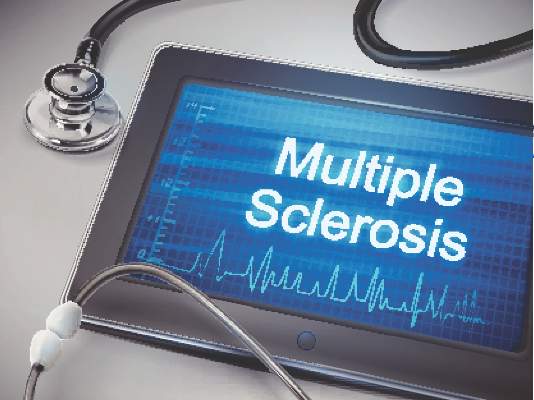FROM NEUROLOGY
The expression of l-selectin on specific T cells in peripheral blood from patients with relapsing forms of multiple sclerosis (MS) does not reliably predict risk for progressive multifocal leukoencephalopathy (PML) during natalizumab treatment, according to findings from a Biogen-supported study.
These findings are at odds with those of a previously reported preliminary study that used a different analytical technique. Investigators in the earlier preliminary study had found a drop in the percentage of CD4- and CD3-positive T cells expressing l-selectin (CD62L) at least 4 months and often 2 years prior to PML diagnosis and concluded that measuring the percentage of CD4- and CD3-positive T cells expressing l-selectin (%CD62L) “may improve stratification of patients taking natalizumab who are at risk for developing PML,” according to the study from Biogen, which makes natalizumab (Tysabri).
Biogen investigators, led by Linda A. Lieberman, Ph.D., sought to confirm the findings, enhance the reproducibility of the %CD62L assay, “and potentially enable the deployment of %CD62L as a biomarker for PML in a global setting.” However, the investigators did not find a significant difference in %CD62L in cryopreserved peripheral blood mononuclear cells in 104 patients with relapsing forms of multiple sclerosis (MS) on natalizumab who did not develop PML, compared with 21 who developed PML ( Neurology. 2015 Dec 30. doi: 10.1212/WNL.0000000000002314 ).
In the current study, the investigators detected a large range in %CD62L (0.31%-68.4%) in a subset of natalizumab-treated MS patients without PML at two time points at least 6 months apart. Because CD62L and the chemokine receptor CCR7 are coexpressed on CD4- and CD3-positive T cells, they also checked the level of variation in simultaneous measurements of %CD62L and %CCR7 on the same cells at two separate time points in the same patients. They found that %CD62L expression varied substantially, whereas %CCR7 varied little, and the difference between the two was significant, “signifying that %CD62L is not a stable outcome measure,” they wrote.
Dr. Lieberman and her colleagues also confirmed a positive correlation between lymphocyte viability and %CD62L expression, which highlights the “technique-driven variability of the assay” that was used in the preliminary study.
In patient samples collected at least 6 months prior to PML diagnosis, %CD62L did not discriminate significantly between non-PML and active PML (defined as 0-6 months prior to diagnosis). The median %CD62L varied according to the viability of cryopreserved CD4- and CD3-positive T cells. Median %CD62L was no different between non-PML and pre-PML samples with lymphocyte viability greater than 75% (25.9% vs. 26.3%, respectively) but was significantly lower than with non-PML and pre-PML samples with lymphocyte viability less than 75% (10.55% and 5.41%). There was no difference in lymphocyte viability between non-PML and pre-PML samples.
In a case-control comparison of patients on natalizumab who had multiple pre-PML samples, nine patients who developed PML had %CD62L values that in most samples fell in the range of nine matched control patients without PML.
Examination of samples from non-MS patients demonstrated that %CD62L also could vary significantly in various disease states, such as after influenza vaccination and during hospitalization for total knee replacement surgery or methicillin-resistant Staphylococcus aureus infection, the researchers found.






